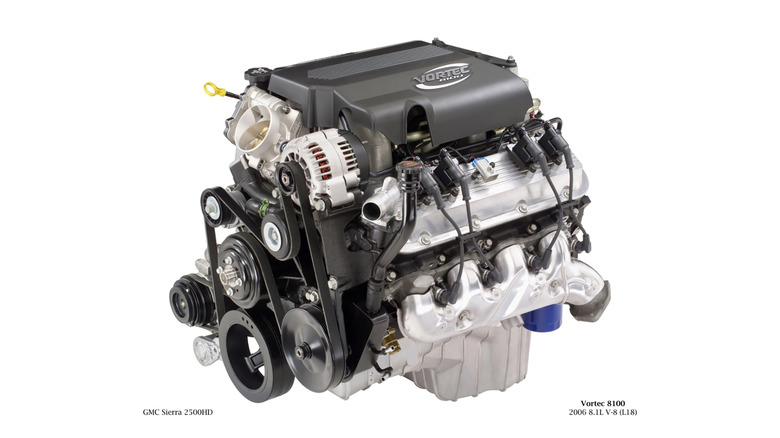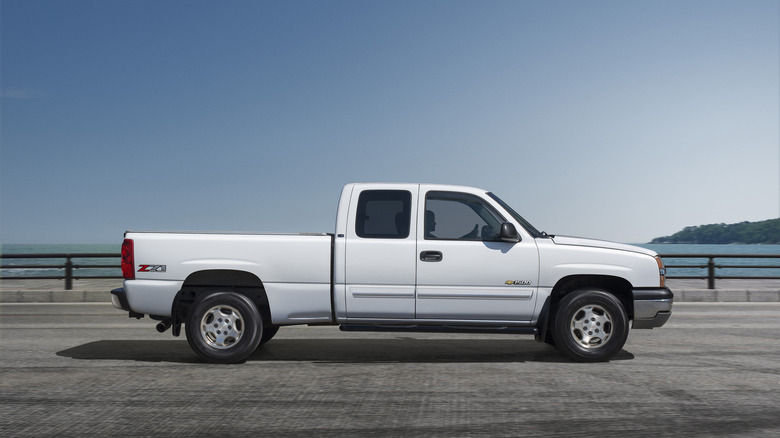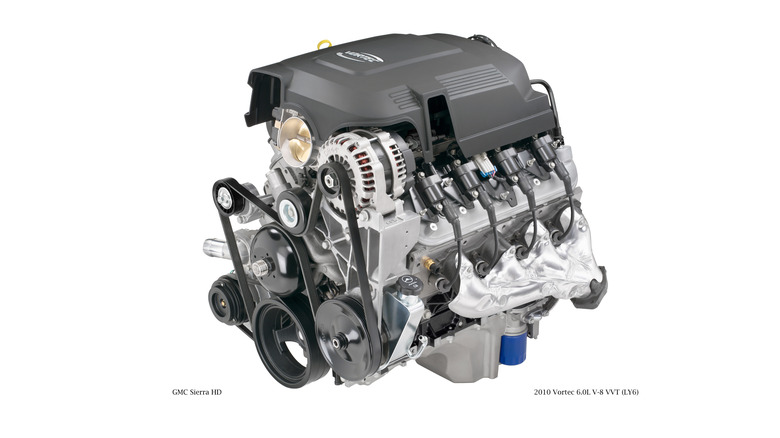Chevy's Last Big Block Engine: The 8.1L Vortec
The big block V8 used to be a staple of hot rod and modification scenes. The old adage "there's no replacement for displacement" is seriously dated in the modern era, but it rang true in the era of the big block. A bigger engine offers bigger displacement and, thus, bigger power. However, as technology advanced through the 1980s and 1990s and forced induction began its hostile takeover, the big block engine platform largely came to an end.
However, one GM platform big block Vortec engine held its own. The Vortec 8.1 (also known as the Vortec 8100 or 496) stayed in production for heavy-duty GM vehicles all the way until 2007. As you might imagine, they weren't the most efficient engines out there, but they did pack plenty of grunt. Let's take a look at the specs of this monstrous 8.1-liter V8 and see how it's still managing to be relevant even to this very day.
A towing dream come true
GM set out to make the Vortec 8100 a tough and resilient engine for folks looking to tow. It's based on the old-school Gen-VII Big Block and effectively is a 454 with a longer (4.37-inch) stroke. Other major improvements include massively updated electronics and, importantly, updated electronic fuel injection for a bump in efficiency compared to older big block engines. GM also added an LS-style intake manifold to the 496 to cement its footing in the modern world while taking the title as one of the biggest production engines ever sold.
The result was 340 horsepower and 455 lb-ft of torque under the hood of 2500/3500 trucks and 2500 chassis Avalanches, Yukons, and Suburbans. With its low-RPM start for the torque (1,200 RPM) and narrow rev range to around 4,000 RPM, the Vortec 8100 was a picture-perfect gasoline towing platform. It offered nearly as much torque as the Duramax diesel offerings at the time without the additional upkeep of a diesel powerplant. For some, that's invaluable.
The Vortec 8100 also made its way into medium-duty commercial trucks and boats. With the lax emissions regulations on boats, the 496 made up to 550 horsepower and 690 lb-ft of torque from the factory.
All good things must come to an end. At least, to some extent
Ultimately, the LS platform drove the big block Vortec 8100 to its production demise. With single-digit fuel economy numbers in the city, the Vortec 8100 just stopped making sense. The small-block 6.0-liter LS-based engine took its spot by 2007, substantially increasing fuel economy while retaining 360 horsepower. Of course, the smaller engine came with a penalty in torque with a drop to 380 lb-ft. Ultimately, it was a compromise that was worth making.
Good news for lovers of the big block platform, though. While the Vortec 8100 went out of production well over a decade ago, a handful of aftermarket companies and big-block-loving hot rodders keep these things relevant. If you're looking to swap an engine into a project car or modify an 8.1-equipped vehicle, a handful of companies are making performance upgrades for this beast. Aluminum heads, stroker kits, camshafts, and intakes are among the bolt-on parts that will step up the Vortec 8100's game.
With bolt-together kits available that send power as high as 685 horsepower and 680 lb-ft of torque naturally aspirated, there's plenty of appeal. However, prices north of $10,000 for that kind of power might just steer you back to swapping an LS-based engine like so many folks turn to. If you've got the money and the under-hood real estate, though, there's just something satisfying about an old-school NA big block build.


